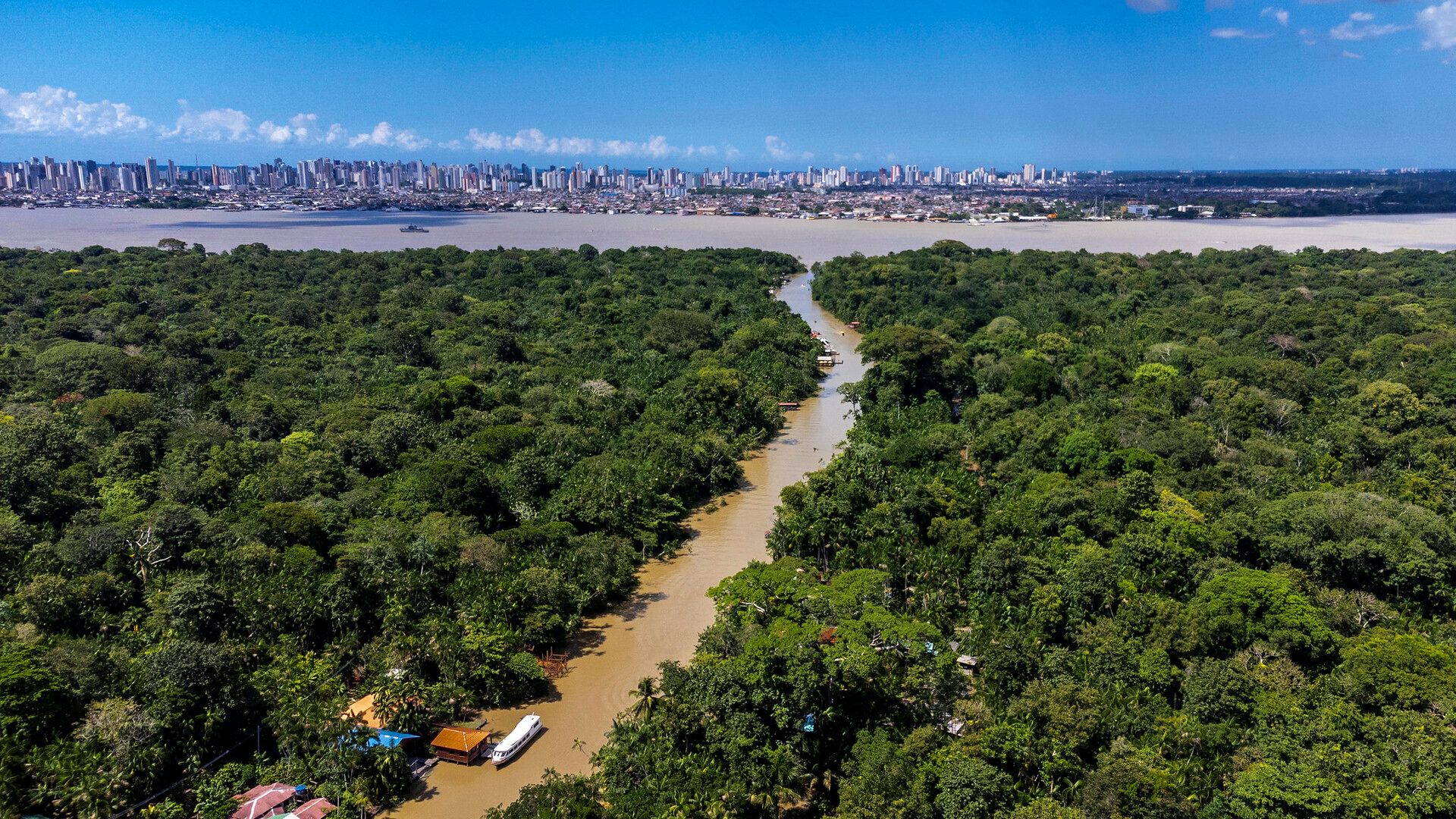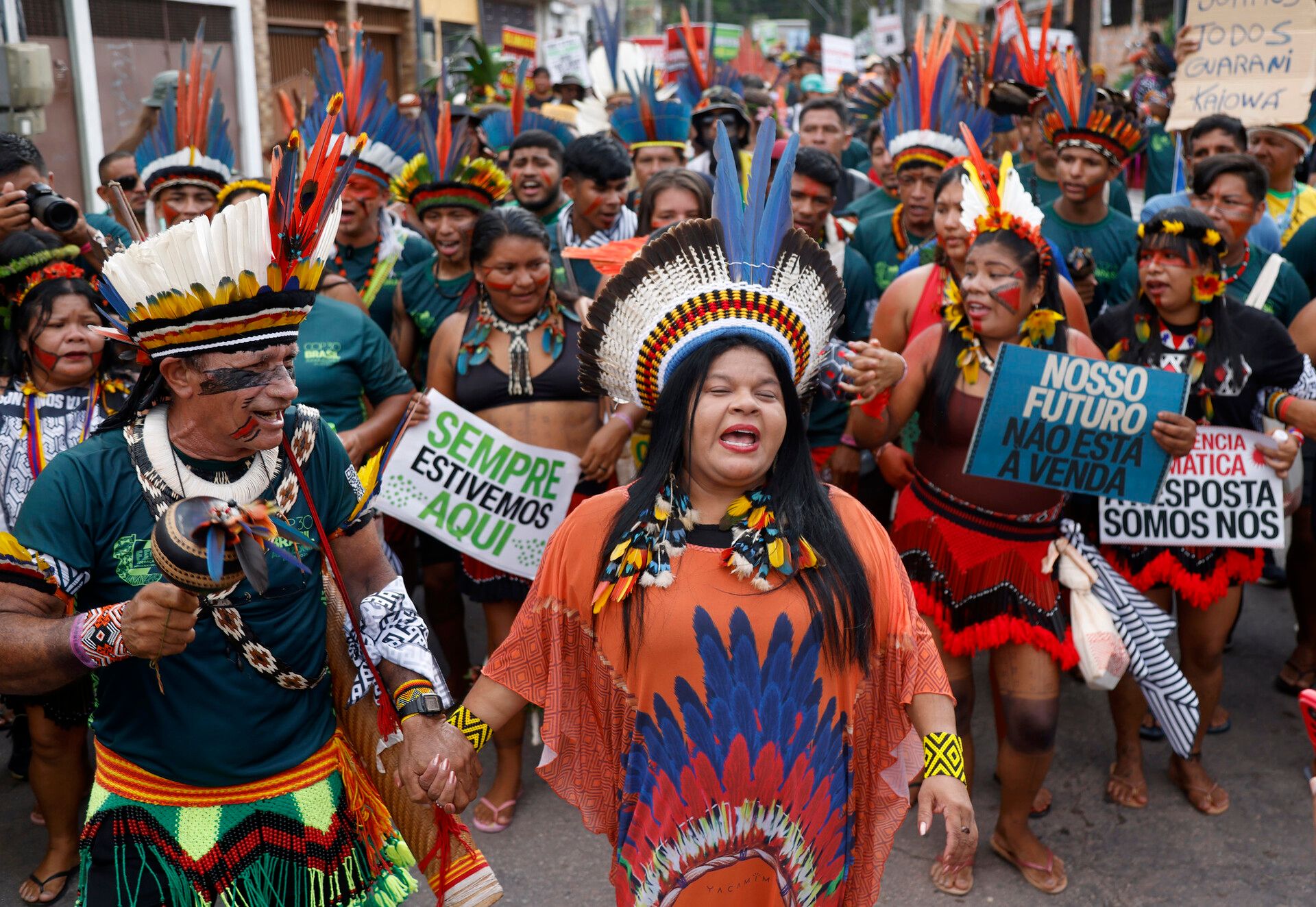
Maybe André Corrêa do Lago feels it too? We can’t confirm. Image by Rafa Neddermeyer from COP30 Brasil Amazônia.
Hey there! Friday marks the end of the United Nation’s climate talks in Brazil, aka COP 30. And the vibes are not good.
If you’ve been reading the reporting work we’ve done for Good On You, you might’ve seen the special COP29 feature we published last year on the pitiful state of most fashion brands’ actions to reduce their emissions or even talk about doing so.
That report, authored by Sophie Benson, found most brands aren’t even disclosing any progress towards their emissions targets, let alone meeting them.
This year, the narrative from the industry’s leaders is much the same: blah, blah, blah.
But in this week’s briefing, Amy looks at the COP30 view from fashion and spotlights the (fairly straightforward) solutions activists are calling for.
Thanks for reading! Find the full briefing below.
Amy and JD
What’s happening?
As COP30 climate talks wrap up in Belém, Brazil, one thing is clear: Fashion leaders keep doing what the vast majority of other world leaders are doing — emitting hot air as they drag their feet. That’s according to climate campaigners and advocates of a just fashion industry, who are getting, let’s call it, COP fatigue from the inaction.
Yes, for the past seven years, since COP24 in Poland, the United Nation’s Fashion Industry Charter for Climate Action have published letters and asked the industry to voluntarily pledge to do better. But emissions have actually “skyrocketed” since then, according to an open letter released last week by climate groups addressed to the UN Fashion Charter signatories.
Ruth MacGilp tells anxiety.eco: “This is no longer about ‘progress over perfection’ — it’s time for brands to put their hands up and say ‘we haven't done enough,’” MacGilp is fashion campaigns manager at Action Speaks Louder, one of the three signatories of the letter alongside Fashion Revolution and Stand.earth. She underscores the stakes: “This year’s COP is a wakeup call for the trillion-dollar fashion industry to stop talking, and start paying up.”
Five years from now, we need emissions to be cut in half, but the good news is that we know exactly how to do it: stop using fossil fuels.
“If brands are still complaining about a lack of data or lack of consumer demand for sustainability, they are simply unserious about safeguarding the future of their business on planet Earth,” MacGlip says. “Five years from now, we need emissions to be cut in half, but the good news is that we know exactly how to do it: stop using fossil fuels.”
However, the defining theme coming out of COP30 is a continued denial of that imperative; rather, in what sounds like satire, the public relations firm that’s most reliant on fossil fuel revenue is representing COP30. The UNDP commissioned Edelman — the PR firm to oil giants including Shell, Chevron, and ExxonMobil — to handle this COP’s communications with a contract worth $835,000.
Such a ludicrous decision makes a mockery of COP itself, activists point out, amidst a round of talks that should be significant. They’re being held on the edge of the Amazon rainforest, where the impact of the climate crisis and fashion’s exploitative practices are already hard-felt — particularly in deforestation for cattle-ranching to produce leather and to make way for monoculture forests in cellulosic fibre production.
The urgency and commitments to systemic change are still sorely lacking. You can see it in the news that some world leaders haven't even shown up to this year’s talks, of weakening emissions targets, and of slow progress. Not to mention that Indigenous voices are still not being heard.

Belém in Brazil, where COP30 is taking place, is considered the gateway to the lower Amazon region. Image by Alex Ferro from COP30.
What are people saying?
Liv Simpliciano, Fashion Revolution’s head of policy and research, tells anxiety.eco: “At COP, frontline activists are literally on their knees pleading for what should be the most basic point of consensus: the right to a livable future.”
And outside the talks in Belém, where thousands from Indigenous communities marched, protestor Tuga Cíntia told the BBC: "I'm here because enough is enough with COP meetings and theory. It's time for us to actually act.”
Clearly, COP fatigue is widely felt. Campaigners, citizens, and communities are fed up with the lack of progress on emissions reduction.
Frontline activists are literally on their knees pleading for what should be the most basic point of consensus: the right to a livable future.
Another open letter was making the rounds on the internet recently, this time from Clean Creatives, the campaign to end fossil fuel advertising and PR, signed by 65 climate action experts and educators, including Mikaela Loach and Joycelyn Longdon. The letter called on Edelman to drop its fossil fuel clients: “Edelman staff will be writing talking points for the climate talks that we are expected to use and amplify, while simultaneously advocating for the oil and gas industry,” it read.
But for fashion’s share of the problem, mainstream fashion media isn’t a credible messenger for the kind of transition the industry rapidly needs to make. Aside from a few journalists doing the work, much of the COP30 coverage has been lacking, or simply touches on key talking points.
What people want to see now is accountability, as highlighted in the open letter from Action Speaks Louder, Fashion Revolution and Stand.earth: “As a contributor to 2% of global emissions, the fashion industry has a clear responsibility to collaborate for a clean energy transition, and embrace this strategic opportunity for resilience and transformation.”

Sonia Guajajara, minister for Indigenous Peoples of Brazil, at the global march for The Answer is Us campaign, which calls for unity in finding solutions to the climate crisis. Image by Hermes Caruzo from COP30.
What to keep an eye on
“Big Fashion has long benefited from externalised environmental costs that have protected their profits while harming the very people and communities their business depends on. Leadership means a willingness to confront the structural issues the industry has avoided for far too long,” Simpliciano tells us.
This good news is that there are solutions. The industry just needs to put them in action.
Simpliciano explains: “That means leveraging their power to advocate for supportive policies, investing in clean energy transitions in production countries, and doing it in a way that is not top-down but grounded in genuine dialogue with suppliers, workers, and communities on the frontlines.”
It’s the call to action in Fashion Revolution’s What Fuels Fashion report, now in its second edition, which charts the world's largest fashion brands on disclosure of their climate and energy-related policies, practices and impacts.
Transitioning to clean energy might sound complex, and it does indeed require collaboration between different actors throughout fashion’s supply chain and governments too. But, as the open letter notes, some of the solutions for this already exist, they just need funding. After all, they are not even that expensive when compared to the wealth hoarded by fashion’s billionaires.

